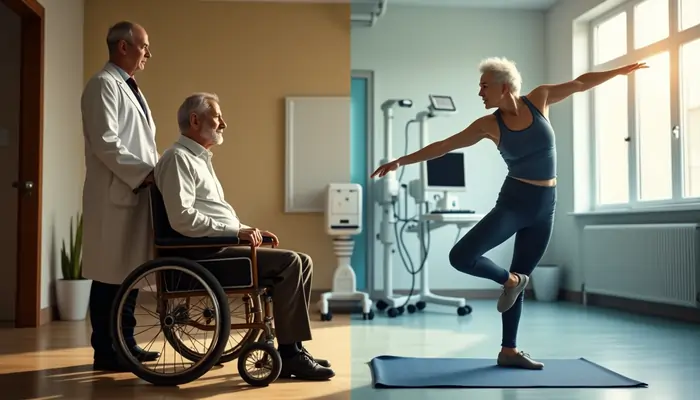Biohacking Guide for Beginners: 7 Steps to Proven Results (2025)

When I first encountered the term “biohacking,” I imagined complex lab equipment and radical body modifications. Maybe you’ve felt the same way. But after years of research and personal experimentation, I’ve discovered that effective biohacking is accessible to anyone willing to make informed, incremental changes to their daily habits.
This guide distills what I’ve learned into 7 actionable steps that anyone can implement—whether you’re struggling with low energy, poor sleep, brain fog, or simply want to optimize your health and performance. No expensive equipment required, just evidence-based strategies that deliver measurable results.
If you’re ready to take control of your biology and experience what your body and mind are truly capable of, let’s begin your biohacking journey.
Biohacking guide for beginners, often called “DIY biology,” lets people consider science-backed changes to boost their physical and mental performance. The concept includes everything from basic dietary adjustments to advanced treatments like NAD+ injections that enhance energy and cognitive function.
Starting with biohacking doesn’t need to be complex. Small, step-by-step lifestyle changes can help you sleep better, boost your energy, and think more clearly. Many people improve their energy levels and metabolic health through popular techniques like intermittent fasting and high-intensity interval training (HIIT).
More people turn to biohacking as chronic diseases become more common. They seek preventative solutions and ways to live longer. Research suggests that practices such as calorie restriction and intermittent fasting might help extend lifespan.
This piece biohacking guide for beginners explores practical approaches from sleep tracking to contrast therapy (alternating between hot and cold exposure). It also covers key supplements like Vitamin D and Omega-3s. You’ll learn how to track your results and discover what works best for your body.
Before diving into specific techniques, it’s important to understand the biological mechanisms that make biohacking effective:
Biohacking works primarily by optimizing cellular function through several key pathways:
- Mitochondrial Enhancement: Many biohacks directly target mitochondria—your cellular powerhouses—improving their efficiency and number. Research published in Cell Metabolism (2017) shows that practices like intermittent fasting can increase mitochondrial biogenesis by up to 30%.
- Hormetic Stress Response: Techniques like cold exposure activate hormesis—a beneficial stress response where mild stressors trigger protective cellular mechanisms. Studies from the Journal of Applied Physiology show cold exposure increases norepinephrine by 200-300%, boosting alertness and reducing inflammation.
- Circadian Rhythm Regulation: According to research from the Proceedings of the National Academy of Sciences, optimizing light exposure and meal timing can synchronize over 80% of your genome that follows circadian patterns, directly impacting energy levels, cognition, and cellular repair.
These biological mechanisms explain why biohacking protocols produce measurable benefits rather than just placebo effects.
📺 **Watch Now: Biohacking Guide for Beginners **
Step 1: Understand the Biohacking Mindset
The term “biohacking” might sound like something from a sci-fi movie, but it’s all about taking control of your biology. A solid grasp of the biohacking mindset sets the foundation for anyone starting their health and performance optimization experience.
What Biohacking Guide for Beginners really means
Biohacking is a DIY approach to biology where people try changes to improve their health and performance. According to PBS, “biohacking is a fairly new practice that could lead to major changes in our life…
Biohacking guide for beginners includes everything from simple lifestyle changes to advanced experimentation. Dave Asprey, a pioneer in the field, points out two views: “One is that biohacking is something you do to biology, outside of yourself…
Why mindset matters more than tools
People often make the mistake of buying the latest gadgets instead of developing the right mental approach. The biohacking mindset forms the foundations of success. This mindset has several key principles:
- Embrace experimentation – See health as a continuous experiment where failures teach valuable lessons
- Use data for decisions – Track metrics to learn about your body’s response to different interventions
- Focus on continuous improvement – Push beyond the status quo and optimize
- Take a systems-thinking approach – See how bodily systems work together
Stay open-minded and curious – Try new ideas even if they seem unusual
More than that, mindset changes create ripple effects.
Related post: Mind Over Body: The Science Behind How Your Thoughts Control Aging
The role of curiosity and experimentation
Curiosity powers the biohacking movement.
This experimental approach inspired people like Keoni, who at 19 years old had “gathered more knowledge than the average biologist.” He says, “I can basically engineer micro-organisms well.
All the same, experimenting without careful tracking is just guesswork.
The scientific method gives a framework for biohacking experiments:
- Find a problem area you want to fix
- Research possible solutions
- Form a hypothesis about what might work for you
- Test through careful implementation
- Measure results objectively
Improve your approach based on findings
Note that biohacking is individual-specific by nature.
People starting with biohacking guide for beginners should balance curiosity with caution. WebMD advises, “be suspicious if a website is trying to sell you something. Does it promise a ‘guaranteed’ result? Does the product have ‘secret’ ingredients?
Resources:
- DIYbio.org – Community for biohackers and DIY biology enthusiasts
- PubMed – Database of biomedical literature
- InsideTracker – Platform for personalized health analytics
Step 2: Track Your Baseline Metrics
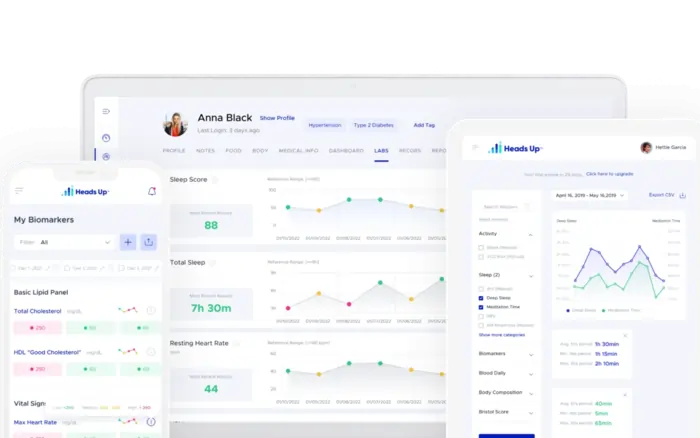
Image Source: Heads Up Health
Your personal baseline metrics are the foundations of effective biohacking. You can’t tell if your biohacking efforts work without knowing your starting point.
Sleep patterns and quality
Sleep quality impacts everything from cognitive function to hormone production.
Related post: Perfect Night Routine: Science-Backed Sleep Guide (2025)
Pick a tracking method that matches your lifestyle:
- Phone-based apps like Pillow or Sleep Cycle use your phone’s microphone to detect sounds and movements
- Wearable devices such as Apple Watch, FitBit, Oura Ring, or Garmin watches give more detailed data
- On-bed options like Withings mats monitor breathing and muscle movements without requiring you to wear anything
These key metrics need tracking:
- Total sleep time
- Sleep stages (REM, deep, and light sleep)
- Sleep consistency (going to bed and waking at consistent times)
- Heart rate variability (HRV)
- Oxygen saturation (SPO2)
- Resting heart rate
“Going to bed and waking up at the same time every day supports circadian rhythm function.
Related post: How To Get Better Sleep: A Science-Backed Guide for Better Rest
Diet and digestion logs
A food journal helps you learn about how different foods affect your energy, mood, and overall well-being.
Your complete food log should include:
- What you ate – Break down meals into individual ingredients
- How much you ate – Record quantities using any measurement scale
- What time you ate – Log in real-time to track timing effects
“Personalized food choices are at the heart of metabolic health.
Food logging does more than help with weight management—it helps spot food sensitivities, shows unhealthy eating patterns, and teaches you how your body handles different nutrients. Many CGM applications make documenting this information quick and easy.
Related post: Healthy Diet for Longevity: Science-Backed Foods & Eating Patterns (2025)
Energy and mood tracking
Sleep, diet, stress, and physical activity affect your energy levels throughout the day. Tracking these patterns shows valuable links between your lifestyle choices and how you feel.
Keep a simple daily log of:
- Energy level on a scale of 1-10 at different times of day
- Mood changes and potential triggers
- Mental sharpness and focus
- Physical performance metrics
“Track ONE thing at a time like sleep, steps, or focus hours. Don’t obsess over daily fluctuations.
Patterns you find bring the real value from tracking. One biohacker shared: “My tracker showed my late-night Netflix binges were cutting into my deep sleep.
Note that self-awareness creates behavior change—you can’t improve what you don’t measure. Start with a few key metrics that line up with your main health goals instead of tracking everything at once.
Resources:
- InsideTracker – https://www.insidetracker.com
- Sleep Foundation – https://www.sleepfoundation.org
- Cronometer – https://cronometer.com
- Zero Fasting – https://zerofasting.com
Essential Metrics Worth Tracking
- Sleep Quality Metrics:
- Deep sleep percentage (aim for 20-25% of total sleep)
- Sleep latency (time to fall asleep)
- Sleep consistency (regular bed/wake times)
- Tools: Oura Ring, Whoop, or free apps like Sleep Cycle
- Physical Performance Markers:
- Resting heart rate
- Heart rate variability (HRV)
- Recovery time after exercise
- Tools: Fitness trackers, HRV-specific apps like HRV4Training
- Cognitive Performance:
- Focus duration
- Task completion time
- Error rates
- Tools: Apps like Cambridge Brain Sciences or simple self-assessments
- Creating a Tracking System:
Make only one change at a time to accurately attribute results
Begin with weekly measurements
Use a simple spreadsheet or dedicated app
Look for patterns rather than daily fluctuations
Effective biohacking guide for beginners requires measuring where you start and how you progress. Here’s how to set up a tracking system that provides actionable insights:
Essential Metrics Worth Tracking
| Category | Key Metrics | Target Ranges | Recommended Tracking Tools |
|---|---|---|---|
| Sleep | Deep sleep %, REM %, wakefulness, total duration | 20-25% deep sleep, 7-9 hours total | Oura Ring, Whoop, or free apps like Sleep Cycle |
| Energy | Subjective energy (1-10 scale), afternoon slump severity | Consistent 7+ rating throughout day | Custom spreadsheet with time-based tracking |
| Cognition | Focus duration, task completion time, error rates | Baseline +20% improvement | Cambridge Brain Sciences app or simple time tracking |
| Physical | Resting heart rate, HRV, recovery time | RHR: Age-dependent, HRV: Increasing trend | Most fitness trackers, dedicated HRV apps |
| Mood | Daily mood score, stress levels | Consistent or improving trend | Apps like Daylio or simple journal |
Creating Your Tracking Dashboard
- Start Simple: Begin with just 2-3 metrics that align with your primary goals
- Be Consistent: Measure at the same time daily or weekly
- Document Changes: Note which biohacks you implement and when
- Look for Patterns: Review monthly to identify which interventions move your metrics
Step 3: Start With Simple Lifestyle Tweaks
Basic lifestyle changes create powerful results in your biohacking trip. You don’t need expensive equipment or complex protocols. These basic changes cost almost nothing but can transform your health metrics. These starter biohacks give beginners a perfect way to start after they know their baseline numbers.
Cutting blue light before bed
Screens and modern lighting fool your brain into thinking daylight continues, which disrupts your natural sleep patterns.
You can easily reduce blue light exposure:
- Wear amber-tinted glasses 2-3 hours before bedtime (they block blue light while allowing you to use devices)
- Install f.lux or similar programs on your computer to automatically adjust screen color
Use dim red lights for night lights instead of white/blue lights Turn off all overhead lights 1-2 hours before bed
The science backs this up.
Related post: Does Blue Light Damage Skin? The Hidden Truth Your Screen Won’t Tell You
Getting morning sunlight
Morning sunlight stands out as one of the most powerful yet unused biohacking tools.
The best way to do it:
Sunlight in the morning resets your body clock and prepares you for better sleep.
Bad weather or busy schedule?
Hydration and movement breaks
Good hydration powers your cells but many biohacking guide for beginners skip this topic. Here’s a simple tip: “First thing in the morning, drink a glass of water.
Try these practical hydration tips throughout your day:
Keep a 2L bottle with a straw nearby (many report drinking more water this way) Set hourly reminders to drink water during work Add trace minerals or a pinch of salt for better absorption
Movement breaks work great with good hydration to fight sitting too much. “Most of us live sedentary lives. Raise your hand if you sit at a desk most of the day.
Move every hour—walk to talk with colleagues instead of sending emails, take stairs, or stretch at your desk. These small movements keep your energy up and help your metabolism stay healthy all day.
Resources:
- Harvard Health (blue light research): health.harvard.edu
- Huberman Lab Podcast (light exposure protocols): hubermanlab.com
- Sleep Foundation: sleepfoundation.org
Step 4: Try Proven Biohacks for Beginners

Image Source: Spas Unlimited
Want to take your biohacking experience to the next level? These four evidence-based techniques provide powerful benefits with minimal risk. Each technique serves as the life-blood of practical biohacking to help beginners achieve measurable improvements in physical and mental performance.
Related post: 5 Science-Backed Affordable Longevity Hacks That Actually Work in 2025
Intermittent fasting basics
The 16/8 method stands out as the most user-friendly approach.
Research shows IF can substantially improve weight management with numerous health benefits.
Cold showers and sauna use
Your body creates a powerful physiological response through contrast therapy—alternating between hot and cold temperatures. This Nordic practice has existed for centuries.
Your blood vessels constrict faster during the transition from heat to cold.
Beginners should start with shorter sessions.
Related post: Cold Therapy Science: The Hidden Biology Behind Living Longer
Meditation and breathwork
Three beginner-friendly techniques include:
Deep diaphragmatic breathing: Your abdomen expands with deep breaths to engage the parasympathetic nervous system, which triggers a relaxation response .Box breathing: A pattern of inhale, hold, exhale, hold—each for equal durations—helps improve composure and focus .Alternate nostril breathing: Switch inhalation between nostrils to balance energy flow and enhance mental clarity .
“By directing attention to the breath, individuals can cultivate mindfulness and deepen their connection with the present moment,” explains meditation expert Dr.
Related post: How Meditation Can Help You Live Longer: The Science Explained
Infrared sauna and red light therapy
Innovative biohacking tools like infrared saunas and red light therapy work at the cellular level.
These therapies work well separately or together.
Wellness centers in many cities now offer these therapies. Home devices have also become available at various price points.
Resources:
- Johns Hopkins Medicine: hopkinsmedicine.org
- National Library of Medicine: pubmed.ncbi.nlm.nih.gov
- Sleep Foundation: sleepfoundation.org
Step 5: Explore Supplements Safely
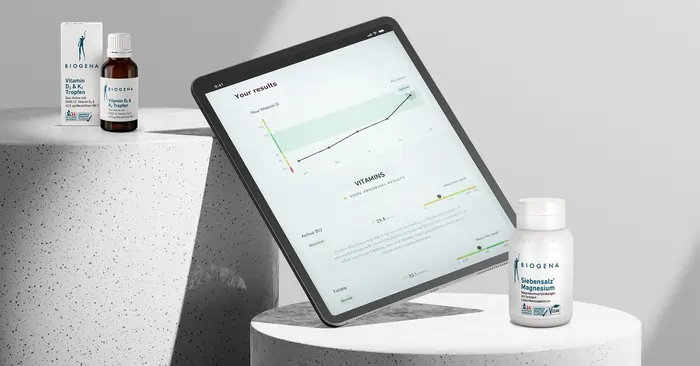
Image Source: Biogena
Supplements play a powerful yet complex role in the biohacking trip. You need to know how to pick the right ones, take them at the right time, and assess their quality. This is a vital skill if you want to optimize your health through biohacking.
Magnesium, Vitamin D, and Omega-3s
Vitamin D is the life-blood supplement in the biohacking community.
Omega-3 fatty acids form the third pillar of fundamental biohacking supplements.
How to test before you take
Testing first is a fundamental principle of responsible biohacking if you plan to add supplements to your regimen.
These testing approaches can help:
Whole blood diagnostics: Unlike standard serum testing, whole blood analysis gives a more complete view of your nutrient status Regular monitoring: A full blood analysis every 2 years might be enough if you already know your body well Consultation with healthcare providers: Medical professionals should always review your supplement plans
Avoiding supplement overload
Supplements can help, but overloading your system comes with risks. Dr. Matthew Badgett from Cleveland Clinic suggests, “Give any intervention two to four weeks and wait to see if it’s making a difference.
These guidelines will help you supplement safely:
- Look for third-party certification from organizations like ConsumerLab.com, NSF International, or U.S.
Pharmacopeia Stay away from “proprietary” ingredients or products promising “guaranteed” results Watch for potential interactions with medications (vitamin E can increase bleeding risk with blood thinners; calcium can reduce antibiotic effectiveness) Keep supplements in dark, cool, dry places—away from children and moisture
Taking extra supplements costs more money and might increase side effect risks.
Resources:
- National Institutes of Health Office of Dietary Supplements: ods.od.nih.gov
- FDA Dietary Supplement Information: fda.gov/food/dietary-supplements
- ConsumerLab: consumerlab.com
Related post: Best Anti-Aging Herbal Supplements Review
Step 6: Monitor, Reflect, and Adjust
Proper tracking separates true optimization from random experimentation in your biohacking experience. Successful biohackers know they can’t determine if their efforts improve performance or health without proper monitoring systems.
Keeping a biohacking journal
A personal biohacking journal teaches you more than digital tracking apps and wearable metrics alone can show. This simple practice helps you spot patterns that raw data might miss.
A well-laid-out journal serves multiple purposes:
- Creates a feedback loop to review what has worked over weeks and months
- Uncovers subtle patterns that digital measurements might miss
- Makes you mindful about how daily habits affect your body and mind
- Adds context to your device’s numbers
“Writing down your experiences, challenges, and observations can help you identify trends that might go unnoticed in raw numbers,” notes one biohacking expert. This practice helps especially when you have to track subjective elements of your experience—energy levels, mental clarity, and emotional state.
When to change your approach
Your results improve when you know the right time to pivot and what to try first. Successful biohackers know when to adjust their approach instead of sticking with interventions that show little benefit.
Think over these questions before making changes:
- Has the intervention had enough time to show results? (typically 2-4 weeks)
- Have I managed to keep consistent with implementation?
- Do other factors affect my results?
“The interventions that once made a significant impact may no longer provide the same benefits,” explains InfraredSauna.com. This happens because your body adapts to challenges over time and needs new stimuli to progress.
Signs your biohacks are working
Of course, subjective feedback matters—how you feel is important. Evidence-based measurements give concrete proof of physiological changes. “While the subjective feedback is valuable, objective measures using hard data are the only way to know for sure how your body is physiologically responding to the changes you implemented,” according to InsideTracker.
Improvements appear gradually rather than overnight. When tracking caffeine consumption, note “how it makes you feel in the minutes or hours afterward: Do you feel more focused? More anxious? Tired?” Then adjust dosage until you find what works best for your specific goals.
Note that “biohacking is a continuous process of testing, tracking, and refining.” Successful biohackers treat health optimization as an ongoing experiment rather than a destination.
Resources:
- InsideTracker: insidetracker.com
- Quantified Self: quantifiedself.com
- Habits Journal: habitjournal.com
Step 7: Build a Sustainable Routine

Image Source: ToneOp
A sustainable biohacking routine can change occasional experiments into lifelong improvements. The most effective biohacking strategies don’t need complexity—they just need your consistent commitment over time.
Start small and stay consistent
Beginners often make the mistake of trying to change their entire lifestyle overnight. This approach frustrates them and makes them abandon beneficial practices quickly. The better way is to focus on one or two small, high-impact biohacks at a time.
“Biohacking isn’t about doing everything at once. Pick one or two habits, measure their impact, and build from there.
Avoiding burnout and obsession
Biohacking burnout happens more than you’d think. Your enthusiasm to optimize can create rigid routines and perfectionism that end up undermining your progress.
“Burnout is an epidemic.
Your schedule should include recovery time, just like your important meetings.
Biohacking focuses on progress, not perfection.
Participating in the biohacking community
Your biohacking trip might feel lonely sometimes, but connecting with like-minded people can speed up your progress and give you valuable support.
Community participation brings multiple benefits—shared knowledge, accountability, and exposure to new ideas. Regular meetups have helped many biohackers overcome challenges and stay motivated.
Keep in mind that biohacking is personal. As one expert notes, “There is no ‘one size fits all’ approach when it comes to biohacking.
Resources:
- Biohacker’s Handbook: biohackershandbook.com
- Found My Fitness: foundmyfitness.com
- Huberman Lab: hubermanlabpodcast.com
Personalizing Your Biohacking Journey
While this guide provides a structured foundation, the most effective biohacking protocol is one tailored to your unique biology and goals.
Understanding Your Biological Uniqueness
Different people respond differently to the same interventions due to:
- Genetic Variations: Your genetic makeup affects how you process caffeine, respond to exercise, and metabolize nutrients. For example, those with the COMT gene variation may experience anxiety with standard caffeine doses.
- Current Health Status: Your starting point determines which interventions will have the most impact. Someone with significant sleep issues will benefit more from sleep optimization than someone with already optimal sleep.
- Personal Goals: Whether you’re optimizing for longevity, cognitive performance, or physical output should dictate which biohacks you prioritize.
How to Personalize Your Protocol
- Start With Your Primary Goal: Focus first on interventions directly related to your main objective:
- Energy optimization: Prioritize mitochondrial support, glucose regulation
- Cognitive enhancement: Focus on sleep quality, fatty acids, blood flow to brain
- Longevity: Emphasize autophagy-triggering practices, anti-inflammatory protocols
- Test One Variable at a Time: Implement one new biohack every 1-2 weeks, tracking results before adding another.
- Consider Genetic Testing: Services like 23andMe with raw data analysis through tools like Promethease can reveal which interventions might work best for your genetic profile.
- Biohacking Case Study: Sarah, a 42-year-old executive with the MTHFR gene mutation, found that standard B-vitamin supplements made her irritable. After switching to methylated B vitamins and prioritizing methyl donor foods, her energy and focus improved dramatically within two weeks.
Conclusion
Biohacking offers a powerful way to optimize health through science-backed adjustments. In this piece, we’ve explored basic strategies you can implement—from understanding the biohacking mindset to tracking baseline metrics and making simple lifestyle changes.
Dave Asprey, a biohacking pioneer, explains “The whole idea behind biohacking is gaining control of systems in your body that you would never have access to” [82]. This individual-specific approach helps you learn what truly works for your unique biology.
Consistency beats intensity when you start exploring biohacking. Dr. Molly Maloof, who specializes in health optimization, points out that “small, consistent changes compound over time to create remarkable results” [83].
You don’t need expensive gadgets or extreme protocols to start biohacking. Basic practices like proper sleep, sunlight exposure, and mindful nutrition yield 80% of results. Contrast therapy and intermittent fasting also provide powerful benefits without much investment.
The most successful biohackers treat their health as an ongoing experiment rather than looking for quick fixes. Biohacking focuses on progress, not perfection. Health researcher Andrew Huberman explains, “Tracking your results objectively allows you to separate what actually works from what merely sounds good in theory” [84].
Worried about taking too many supplements? Dr. Mark Hyman, a functional medicine expert, suggests, “Start with food first, then add targeted supplements based on testing, not trends” [85]. This careful approach saves money and prevents potential harm.
A sustainable routine and connections with like-minded people create the foundation for lasting success. Start your health optimization today with one small change, measure how it affects you, and build from there.
Resources:
- Huberman Lab Podcast: hubermanlab.com
- Found My Fitness with Dr. Rhonda Patrick: foundmyfitness.com
- National Institutes of Health Office of Dietary Supplements: ods.od.nih.gov
- Sleep Foundation: sleepfoundation.org
FAQs
What is biohacking and how can beginners get started?
Biohacking is the practice of making deliberate changes to your lifestyle and biology to optimize health and performance. Beginners can start by tracking baseline metrics like sleep patterns and energy levels, then implementing simple tweaks like reducing blue light exposure before bed and getting morning sunlight.
Are there any risks associated with biohacking?
While many biohacking practices are safe when done properly, there can be risks if taken to extremes or done without proper research. It’s important to start slowly, consult medical professionals when needed, and avoid potentially dangerous interventions like untested supplements or extreme diets.
What are some proven biohacks that offer the most benefits?
Some of the most effective and well-researched biohacks include intermittent fasting, cold exposure (like cold showers), meditation and breathwork, and getting adequate sleep. These practices can improve metabolism, boost immunity, reduce stress, and enhance overall wellbeing.
How long does it typically take to see results from biohacking?
Results can vary depending on the specific biohacks and individual factors. Some people may notice improvements in energy or sleep quality within a few days, while other changes may take weeks or months to become apparent. Consistency and patience are key when implementing biohacking practices.
Do I need expensive equipment or supplements to start biohacking?
No, many effective biohacks require little to no equipment or supplements. Simple practices like optimizing sleep habits, practicing mindfulness, and adjusting your diet can yield significant benefits. While some advanced biohackers use specialized tools, beginners can achieve great results with minimal investment.
What are the potential risks of biohacking?
While basic biohacking techniques like improving sleep, nutrition, and exercise are generally safe, some practices carry risks if implemented incorrectly. Extreme fasting may affect hormone levels, especially in women. Supplement stacking without proper research can lead to interactions or side effects. More advanced biohacking techniques like peptide use or excessive cold exposure should only be done under qualified supervision. Always start with the fundamentals and progress gradually, listening to your body’s signals.
How much does it cost to start biohacking?
Effective biohacking can begin with zero-cost interventions like time-restricted eating, sleep schedule optimization, and light exposure management. As you progress, low-cost tools like blue-blocking glasses ($15-30), basic fitness trackers ($50-100), and fundamental supplements (magnesium, vitamin D, omega-3s for $30-50/month) provide excellent returns on investment. More advanced tools like continuous glucose monitors ($200+/month) or comprehensive tracking devices like Oura Ring ($300+) are optional upgrades for serious biohackers.
How can I measure if my biohacking efforts are working?
The most reliable measurement comes from tracking both objective and subjective metrics. Objectively, monitor sleep quality (deep sleep percentage, REM cycles), HRV, resting heart rate, and if possible, blood markers like fasting glucose, HbA1c, and inflammatory markers. Subjectively, keep a daily log of energy levels, mood, cognitive function (focus duration, mental clarity), and general well-being on a 1-10 scale. Significant improvements in these metrics, particularly when sustained over 30+ days, indicate effective biohacking.
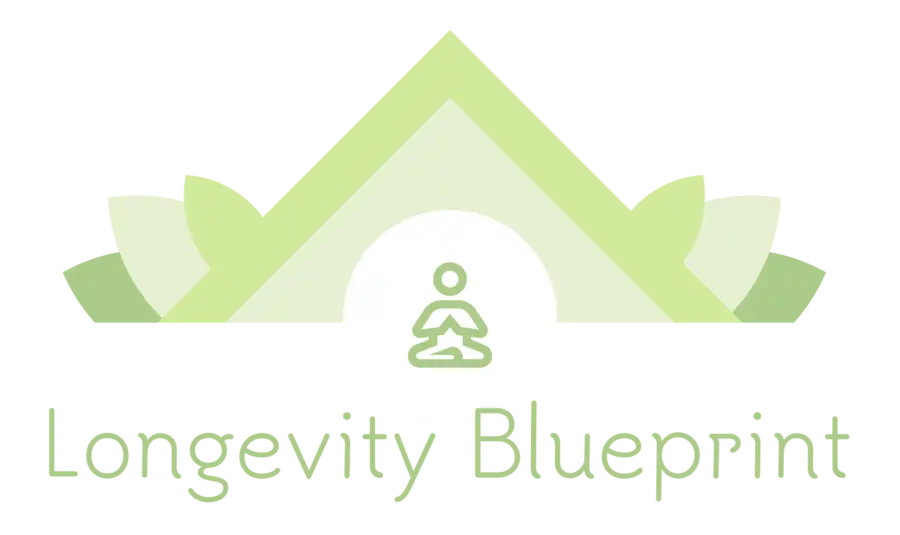


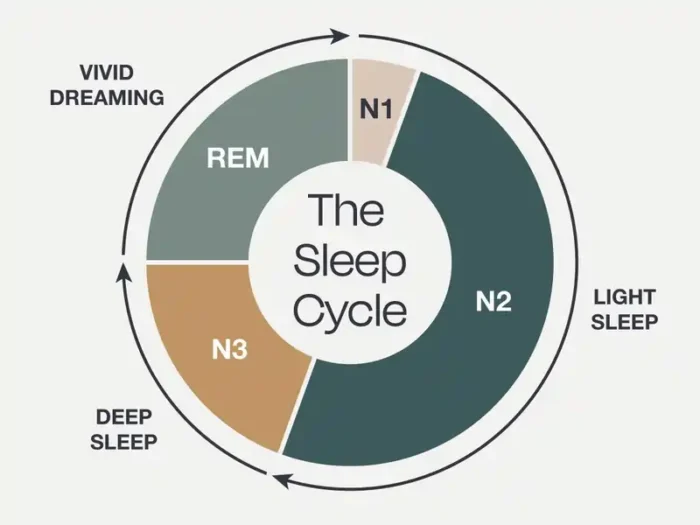




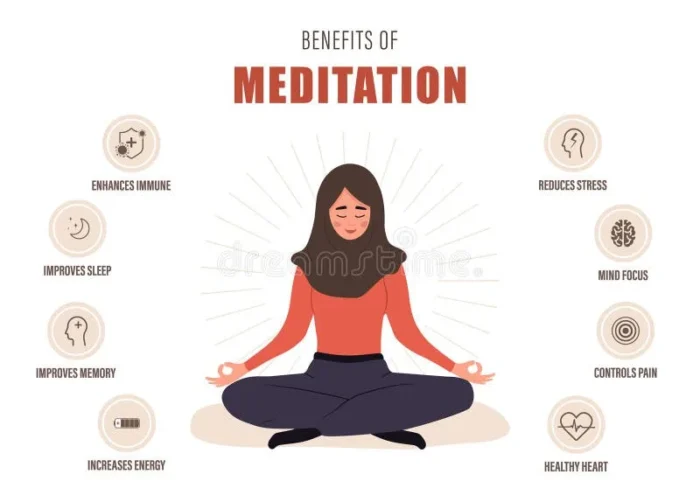

![NMN vs NR: Which Anti-Aging Supplement Actually Works? [2025 Science] 29 NMN vs NR](https://longevityblueprinthealth.com/wp-content/uploads/2025/05/810384d5-0f16-477a-abe0-0872e930cf72-1.webp)



